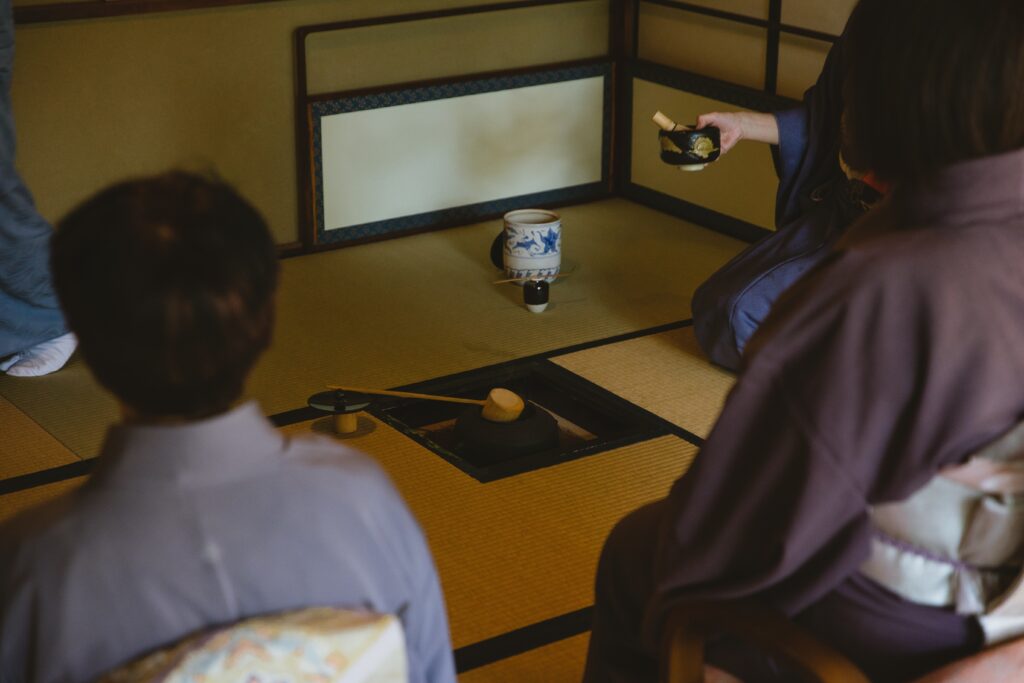Japanese tea sets have been an essential aspect of Japanese culture for centuries. The tea set is used in the traditional Japanese tea ceremony, a cultural practice that emphasizes mindfulness, harmony, and respect. The tea set comprises various items, each of which has a specific purpose and significance. This article will delve into the components of a Japanese tea set, their history, and the importance of the tea set in Japanese culture and tradition.
Components of a Japanese Tea Set
A typical Japanese tea set comprises several items, including:
Chawan (tea bowl) 茶碗
The chawan is a shallow, wide tea bowl used in the Japanese tea ceremony. It is often made of ceramic or porcelain and can come in various colors and designs. The chawan’s design is an essential aspect of the Japanese tea ceremony as it can symbolize different elements like nature or the changing seasons. The bowl’s shallow and wide shape allows the tea to cool quickly, making it easier to drink.
Chasen (tea whisk)
The chasen is a bamboo tea whisk used to whisk matcha tea in the chawan. It comprises numerous thin bamboo tines that help to create a frothy texture. The chasen is an essential item in the tea ceremony as it is used to mix the matcha powder with hot water to create a frothy green tea.

Chashaku (tea scoop) 茶杓
The chashaku is a bamboo tea scoop used to measure and transfer the matcha tea powder from the tea caddy to the chawan. The chashaku is an essential item in the tea ceremony as it helps to measure the right amount of tea powder needed for the tea ceremony.
Hishaku (water ladle)
The hishaku is a bamboo water ladle used to transfer hot water from the iron kettle to the chawan. The hishaku is an important item in the tea ceremony as it helps to control the amount of water needed for the tea.
Fukusa (silk cloth)
The fukusa is a small square silk cloth used in the tea ceremony to handle the tea utensils. It is used to wipe the chawan and other utensils to maintain cleanliness during the ceremony.
Kensui (waste water bowl)
The kensui is a small waste water bowl used to dispose of water used in the tea ceremony. It is an essential item as it helps to keep the tea space clean.
History of Japanese Tea Sets
The history of Japanese tea sets dates back to the 9th century when Japanese monks introduced tea to Japan from China. Tea became popular among the Japanese nobility in the 12th century, and the tea ceremony began to take shape. During the 16th century, the tea ceremony became more popular, and the Japanese started to develop their tea sets. Tea masters and artisans began to produce tea utensils, and the tea set’s design became an essential aspect of the tea ceremony.
The tea ceremony became an essential part of Japanese culture during the Edo period (1603-1868). The tea ceremony was not just about drinking tea, but it was also about promoting harmony, respect, and tranquility. The tea ceremony was a way of life, and the tea set was a symbol of this way of life. The tea set was not just functional, but it was also a work of art that represented the tea master’s values and aesthetics.
Importance of Japanese Tea Sets in Japanese Culture
Japanese tea sets are an essential part of Japanese culture and tradition. The tea set’s design and the tea ceremony’s practice promote mindfulness, harmony, and respect. The tea ceremony is a way of life that emphasizes the importance of being present in the moment, respecting others, and finding harmony in one’s surroundings.
The tea ceremony is often compared to a Zen meditation practice as it requires the participants to be fully present in the moment and appreciate the beauty of simplicity. The Japanese tea set is an essential component of the tea ceremony, and it reflects the values and aesthetics of the tea master.
The tea ceremony is a symbol of hospitality and respect in Japanese culture. It is customary in Japan to serve tea to guests as a sign of hospitality and respect. The tea set used to serve guests is often a high-quality, handcrafted set that represents the host’s status and appreciation for their guests.
The tea ceremony is also a symbol of cultural identity in Japan. The tea ceremony and the tea set have become iconic symbols of Japanese culture around the world. The Japanese tea set’s design, simplicity, and elegance have influenced Japanese aesthetics in art, fashion, and design.

Summary
Japanese tea sets are an essential component of Japanese culture and tradition. The tea set’s design and the tea ceremony’s practice reflect the values and aesthetics of Japanese culture. The tea ceremony is a way of life that promotes mindfulness, harmony, and respect, and the tea set is a symbol of this way of life.
The history of Japanese tea sets dates back to the 9th century when Japanese monks introduced tea to Japan from China. The tea ceremony became an essential part of Japanese culture during the Edo period (1603-1868), and the tea set’s design became an essential aspect of the tea ceremony.
The Japanese tea set’s importance in Japanese culture is evident in its use as a symbol of hospitality, respect, and cultural identity. The tea ceremony and the tea set have become iconic symbols of Japanese culture around the world and have influenced Japanese aesthetics in art, fashion, and design.
In conclusion, the Japanese tea set is not just a functional item but a symbol of Japanese culture and tradition. Its design, simplicity, and elegance represent the values and aesthetics of Japanese culture, and its use in the tea ceremony promotes mindfulness, harmony, and respect.

